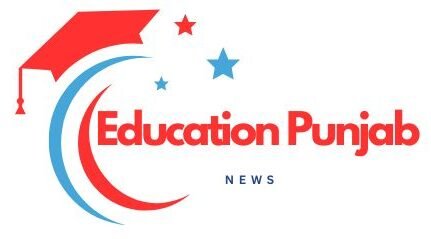
Photo by <a href="https://unsplash.com/@nathan_cima" rel="nofollow">Nathan Cima</a> on <a href="https://unsplash.com/?utm_source=hostinger&utm_medium=referral" rel="nofollow">Unsplash</a>
Introduction to Water Conservation in Schools
Water conservation has become an increasingly critical issue across various sectors, including educational institutions. Schools, as significant consumers of water, play a pivotal role in the broader effort to conserve this invaluable resource. Implementing water conservation measures in schools not only contributes to environmental sustainability but also offers substantial financial benefits.
Statistics reveal that educational institutions are among the top water users in the public sector. On average, a single school can use thousands of gallons of water daily, primarily through restrooms, cafeterias, sports facilities, and irrigation systems. Given the high volume of water consumption, even small changes in usage patterns can lead to significant savings. For instance, reducing water usage by just 10% in a large school district can translate into thousands of gallons saved annually, directly impacting the institution’s operational costs and the environment.
The growing need for sustainable practices within schools cannot be overstated. As climate change and population growth exert pressure on water resources, educational institutions must adopt innovative solutions to manage their water use effectively. These solutions not only help in conserving water but also serve as educational tools, teaching students the importance of sustainability and responsible resource management.
In this context, water conservation in schools transcends beyond mere cost-saving measures. It is about fostering a culture of sustainability that extends to the broader community. By integrating water-saving technologies and practices, schools can set a powerful example for students, who carry these lessons into their homes and future workplaces. School-led initiatives in water conservation can thus catalyze broader societal changes, promoting a more sustainable future for all.
This introduction sets the stage for exploring various innovative solutions and strategies that schools can employ to conserve water. From advanced plumbing systems to educational programs aimed at raising awareness, the following sections will delve into actionable steps that can make a significant impact on water conservation efforts in educational settings.
Implementing Smart Water Management Systems
Integrating smart water management systems within educational institutions can play a pivotal role in reducing water consumption and wastage. These systems leverage advanced technologies to monitor and control water usage in real-time, ensuring efficient use of this vital resource.
Smart faucets, for instance, are equipped with sensors that detect motion, automatically turning the water on and off. This not only helps in conserving water but also promotes hygiene by minimizing physical contact. Additionally, smart faucets can be programmed to limit flow duration and pressure, further contributing to water conservation efforts.
Another significant component of smart water management is advanced irrigation systems. These systems utilize weather data and soil moisture sensors to optimize watering schedules, ensuring that landscapes receive the right amount of water at the right times. By avoiding overwatering, schools can save substantial amounts of water while maintaining healthy green spaces.
Leak detectors are also integral to smart water management systems. These devices are designed to identify leaks early, providing alerts to maintenance staff before substantial water loss occurs. By addressing leaks promptly, schools can avert potentially expensive damages and further conserve water.
Several schools have already seen the benefits of implementing these smart systems. For example, Green Valley High School installed smart faucets and leak detectors across its campus. Within the first year, the school reported a 30% reduction in water usage. Similarly, Riverview Elementary School adopted a smart irrigation system, resulting in a 25% decrease in water consumption for their landscaping needs.
By adopting smart water management systems, schools can not only significantly reduce their water wastage but also set a benchmark for sustainable practices. These technologies offer a practical solution to water conservation, ensuring that educational institutions lead by example in the pursuit of environmental stewardship.
Rainwater Harvesting Techniques
Rainwater harvesting is an innovative and sustainable method for collecting and storing rainwater for future use. This approach not only conserves water but also reduces the dependency on municipal water supply, making it an excellent solution for schools aiming to become more environmentally conscious. By implementing rainwater harvesting systems, schools can use the collected rainwater for various non-potable purposes such as irrigation, flushing toilets, and even some cleaning tasks. These applications significantly cut down on water bills and contribute to the conservation of this precious resource.
Setting up a rainwater harvesting system in a school involves several key steps:
1. Assessment: The first step is to evaluate the school’s roof area, which serves as the catchment for rainwater. Understanding the average rainfall in the region will help estimate the potential water that can be harvested.
2. Collection: Install gutters and downspouts to channel rainwater from the roof to a storage system. Ensure that these components are made of non-toxic materials to prevent contamination.
3. Filtration: Before storing the rainwater, it should be filtered to remove debris and contaminants. Simple mesh filters can be used at the entry points of the gutters, and more advanced filtration systems can be installed in the storage tank.
4. Storage: Select an appropriate storage tank based on the estimated water yield and usage needs. Tanks can be made from various materials, including plastic, metal, or concrete, and should be placed in a shaded area to prevent algae growth.
5. Utilization: Implement a distribution system to deliver the harvested rainwater to different usage points like gardens, bathrooms, and cleaning areas. This may involve pumps and plumbing to ensure smooth operation.
The potential cost savings from rainwater harvesting can be substantial, especially in areas with high water costs. Additionally, the environmental impact of reducing reliance on treated municipal water is significant, contributing to the sustainability goals of the school. By adopting these techniques, schools not only save money but also play a critical role in conserving water and promoting environmental stewardship among students and staff.
Greywater Recycling Programs
Greywater recycling programs present a compelling solution for schools aiming to conserve water and promote sustainability. By capturing water from sinks, showers, and other non-sewage sources, greywater systems treat and repurpose this resource for various non-potable applications. Implementing greywater recycling in educational institutions not only reduces water consumption but also educates students on environmental stewardship.
The process of setting up a greywater recycling system involves several critical steps. First, the school must identify potential sources of greywater, such as bathroom sinks and showers. This water is then directed to a treatment unit, where it undergoes filtration to remove impurities. Advanced systems may incorporate additional treatment stages, including biological processes and disinfection, to ensure the recycled water meets safety standards.
Once treated, greywater can be stored in designated tanks and repurposed for activities that do not require potable water. Common uses in schools include garden irrigation, where the recycled water nourishes plants and landscaping, and toilet flushing, which significantly reduces the demand for fresh water. These applications not only conserve water but also lower utility costs, making greywater recycling an economically viable option for educational institutions.
Moreover, integrating greywater recycling programs in schools fosters a culture of sustainability. Students gain first-hand experience with innovative water conservation technologies, reinforcing the importance of resource management. Educational programs can be developed around the greywater system, offering practical lessons in science, technology, engineering, and mathematics (STEM) subjects. By witnessing the direct impact of greywater recycling, students become advocates for sustainable practices both within their schools and in their communities.
In summary, greywater recycling programs offer a multifaceted approach to water conservation in schools. They not only provide an effective means of reducing water usage but also serve as educational tools that promote environmental awareness. By adopting these systems, schools can play a pivotal role in addressing global water challenges while fostering a generation of environmentally conscious individuals.
Educational Programs and Student Involvement
Integrating water conservation into the school curriculum is an effective way to educate students about the importance of preserving this crucial resource. Schools can incorporate water conservation topics into subjects such as science, geography, and social studies. By doing so, students can learn about the water cycle, the impact of water scarcity, and the global significance of conserving water through engaging lessons and activities.
Workshops and interactive activities are also instrumental in fostering a culture of water conservation within schools. These can include hands-on experiments, water audits, and field trips to local water treatment facilities. Such experiences not only reinforce theoretical knowledge but also provide practical insights into the everyday applications of water-saving techniques.
Student-led initiatives and clubs play a pivotal role in driving water conservation projects within schools. Establishing a water conservation club can empower students to take ownership of water-saving projects. These clubs can organize events like water conservation weeks, where students participate in activities designed to reduce water usage, such as fixing leaks, installing water-efficient fixtures, and promoting awareness campaigns.
Successful student-led water conservation campaigns can serve as inspiring examples for other schools. For instance, a high school in California launched a “Save the Drop” campaign, where students conducted water audits and identified areas for improvement. They then implemented measures such as installing low-flow faucets and educating peers about water conservation practices through presentations and social media campaigns. Their efforts resulted in a significant reduction in the school’s water usage and heightened awareness among the student body.
In another example, an elementary school in Texas initiated a rainwater harvesting project. Students designed and built rainwater collection systems, which were used for watering the school garden. This project not only conserved water but also provided a practical learning experience in sustainable practices.
By incorporating educational programs and encouraging student involvement, schools can create a lasting culture of water conservation. These initiatives not only educate students about the importance of saving water but also empower them to be proactive in implementing water-saving measures within their communities.
Water-Efficient Landscaping
Schools can make a significant impact on water conservation by redesigning their outdoor spaces with water-efficient landscaping techniques. One of the most effective methods is the use of drought-resistant plants. These plants require minimal watering and can thrive in dry conditions, making them ideal for school gardens and green spaces. By incorporating native species, schools can further reduce water use, as these plants are naturally adapted to the local climate and require less maintenance.
Mulching is another crucial practice in water-efficient landscaping. By applying a layer of mulch around plants, schools can help retain soil moisture, reduce evaporation, and suppress weed growth. This practice not only conserves water but also promotes healthier plant growth, leading to more vibrant and sustainable school landscapes.
Smart irrigation techniques are also essential for water-efficient landscaping. Schools can install drip irrigation systems, which deliver water directly to the plant roots, minimizing water waste and ensuring that plants receive the necessary moisture. Additionally, using weather-based irrigation controllers can adjust watering schedules based on current weather conditions, further optimizing water use.
Xeriscaping, a landscaping method that emphasizes water conservation, combines all these practices to create sustainable outdoor spaces. By incorporating drought-resistant plants, mulching, and smart irrigation, xeriscaping reduces the need for frequent watering, lowers maintenance costs, and enhances the overall environmental sustainability of the school grounds.
Overall, adopting water-efficient landscaping practices not only conserves water but also provides several long-term benefits. Schools can save on water bills, reduce their environmental footprint, and create more resilient and attractive outdoor spaces for students and staff to enjoy. By investing in sustainable landscaping, schools play a crucial role in promoting environmental stewardship and educating future generations about the importance of water conservation.
Regular Maintenance and Leak Detection
Regular maintenance and proactive leak detection are fundamental practices for preserving water resources in schools. Ensuring that the school’s water system is functioning efficiently not only helps in conserving water but also results in significant cost savings over time. Schools should implement a structured maintenance schedule to routinely inspect and service plumbing fixtures, pipes, and water-related appliances.
A comprehensive maintenance checklist can be instrumental in this regard. Key tasks should include:
- Inspecting faucets, toilets, and urinals for any signs of leaks or drips.
- Checking water meters and comparing readings over time to identify unusual increases in water usage.
- Examining irrigation systems for leaks or malfunctioning components.
- Ensuring that all plumbing fixtures are equipped with water-saving devices such as low-flow aerators and dual-flush toilets.
- Reviewing and updating the maintenance logs to track repairs and identify recurring issues.
Early leak detection can prevent minor issues from escalating into major problems, which can be costly and environmentally damaging. Schools can install automatic leak detection systems that alert maintenance personnel to potential leaks, allowing for immediate action. Additionally, educating staff and students about the importance of reporting leaks and water wastage can foster a culture of conservation within the school community.
The long-term benefits of regular maintenance and early leak detection are substantial. Financial savings arise from reduced water bills and the avoidance of expensive repairs. Environmentally, conserving water helps mitigate the strain on local water supplies, supporting sustainability efforts. By prioritizing regular maintenance and employing effective leak detection strategies, schools can play a crucial role in water conservation and set an example for their students and the broader community.
Partnerships and Community Involvement
Engaging in partnerships with local environmental organizations, water conservation groups, and businesses can significantly bolster water-saving initiatives in schools. By collaborating with these entities, schools can access additional resources, expertise, and support, making their conservation efforts more effective and sustainable.
Local environmental organizations often possess specialized knowledge and tools that can be invaluable for implementing water-saving programs. These organizations can provide educational workshops for students and staff, helping to foster a culture of conservation within the school community. Moreover, water conservation groups can assist in evaluating the school’s current water usage and identifying areas for improvement, ensuring that efforts are targeted and impactful.
Businesses, particularly those within the water management industry, can also play a crucial role. They can offer financial support through sponsorships or donations, supply advanced water-saving technologies, and participate in joint promotional activities to raise awareness about the importance of conserving water. By partnering with schools, businesses can demonstrate their commitment to environmental responsibility, which can enhance their corporate image while contributing to a critical cause.
The community can get involved in various ways to support these initiatives. Fundraising events, such as charity runs or eco-fairs, can generate funds needed for purchasing water-efficient fixtures or implementing larger conservation projects. Volunteer opportunities, such as garden maintenance or water audit activities, allow community members to contribute their time and effort directly. Additionally, local experts in water management can offer their expertise voluntarily, guiding schools in the development and execution of effective water-saving strategies.
There are several examples of successful community partnerships that have had a significant impact on water conservation in schools. For instance, a school district in California partnered with a local water agency to implement a comprehensive water-saving curriculum and install low-flow fixtures, resulting in a 30% reduction in water usage. Similarly, a school in Texas collaborated with a nearby university’s environmental science department to conduct a water audit and develop a rainwater harvesting system, significantly reducing their reliance on municipal water.
These case studies highlight the profound benefits of community involvement and partnerships in fostering sustainable water usage practices within educational institutions. By leveraging the collective efforts of schools, organizations, businesses, and the broader community, it is possible to create a more water-conscious future for the next generation.





